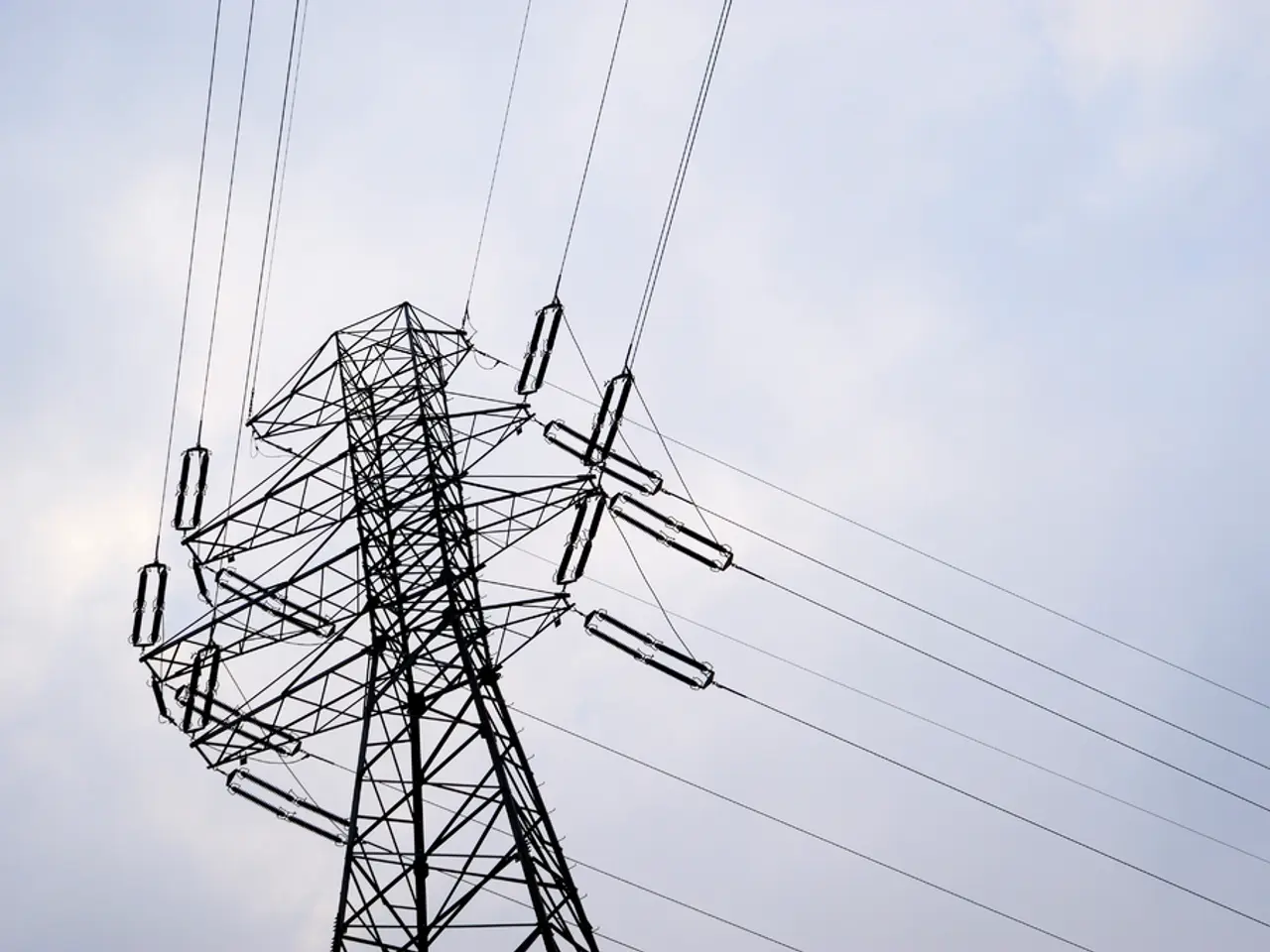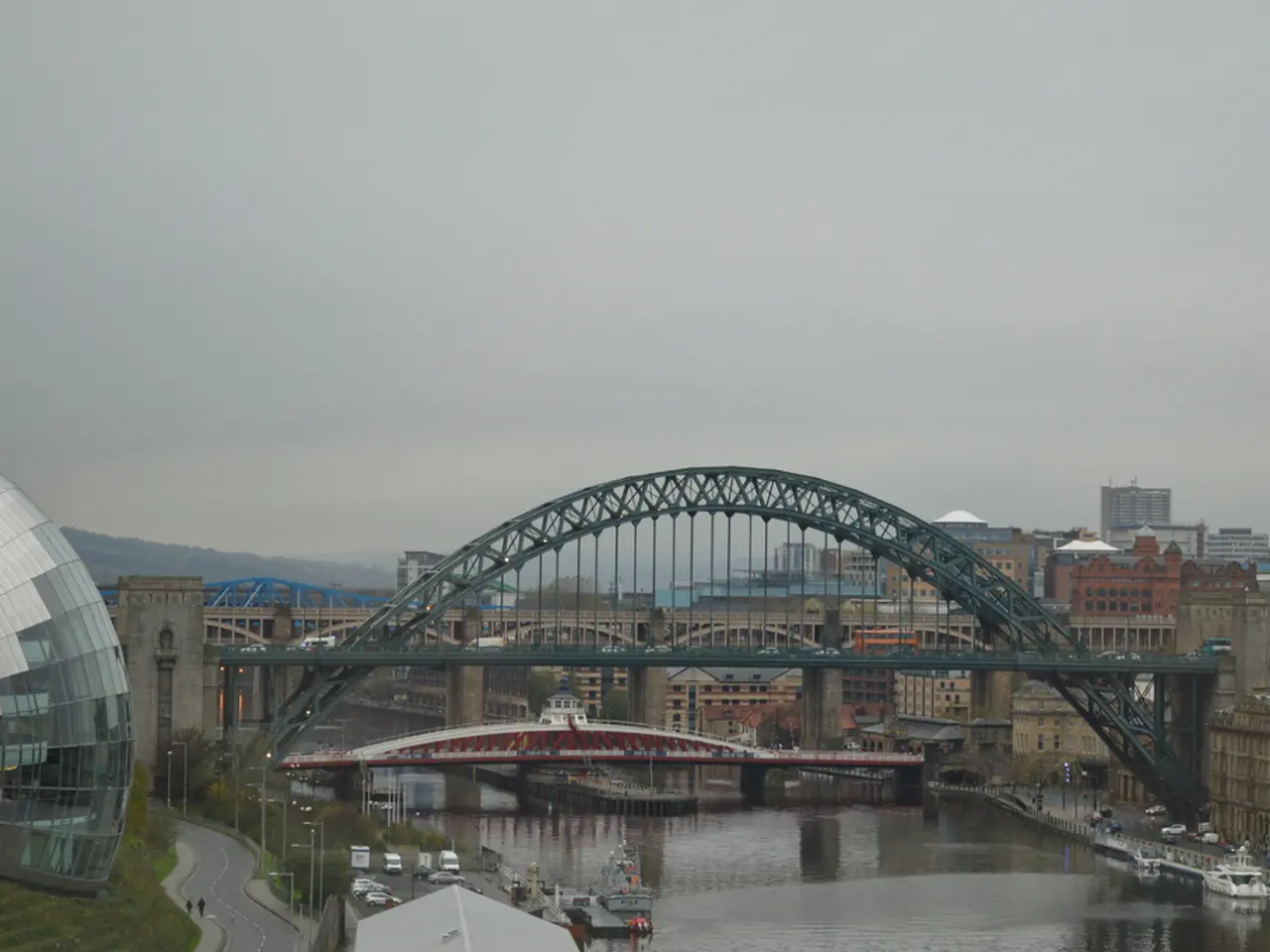Enhancing Home Resilience: Strategies for Fortifying Dwellings Against Severe Weather Conditions Today - Adverse Weather Conditions and Home Safety Measures: Examining the Growing Trend of Safer Housing Constructions
Amidst the Rising Threat of Extreme Weather: Enhancing Housing Safety in Baden-Württemberg
Following an overwhelming flood disaster that struck Bavaria and Baden-Württemberg, as well as neighboring regions, in June 2024, numerous lives were lost, and billions of euros in damages were incurred. Preliminary estimates by the Bavarian State Ministry of Finance placed damages in both states at a staggering 4.1 billion euros. The German Insurance Association (GDV) reports insured damages at around 2 billion euros, without distinguishing between the two states, making the June flood one of the most severe in terms of insured damages throughout recent history.
Around 55,000 addresses in Germany, situated in high-risk flood zones, are a cause for concern as extreme weather events are expected to occur more frequently in the region due to climate change, according to Anja Kafer-Rohrbach, deputy CEO of the GDV. According to this assessment, Baden-Württemberg, with over three million addresses, is home to the majority of these high-risk locations, with the district of Rastattbeing the most vulnerable, followed by the Main-Tauber and Rems-Murr districts.
Residents can utilize a flood risk check made available by the GDV on the internet to determine their own flood risk. This service is free of charge and offered without registration. Homeowners and builders can take additional precautions. According to architect Sven Haustein of Bausparkasse Schwäbisch Hall, the following steps can be taken when building new structures:
- Question the location: Avoid building near rivers, floodplains, or slopes. Elevating the structure or creating a slope that directs water away from the building can help with effective water drainage.
- Build robustly: Durable exterior materials, storm-resistant roofs, and top-quality windows offer protection against adverse weather conditions.
- Secure the roof: Use storm hooks, solid nailings, and reinforced connections to ensure the roof remains in place during storms.
- Seal the basement: Drainage should be addressed based on the soil investigation report. Light shafts and cellar windows may require special protection.
- Manage rain and wastewater: Install cisterns, infiltration areas, and backflow preventers to combat flooding.
Existing properties can also be retrofitted for improved weather resistance. The following changes can be made, according to Haustein:
- Renovate the roof: Secure older coverings and roof trusses with fasteners like storm hooks. Regular inspections can strengthen protection.
- Upgrade windows and doors: Special brackets and seals can better shield them from heavy rain and strong winds. Cellar windows can be further secured with flood protection elements.
- Install backflow preventers: These prevent sewage from flowing back into the house, particularly in homes with lower-lying rooms.
- Re-landscape: Dense hedges, drains, and infiltration zones can help ward off water and wind from the house.
- Employ smart technology: Automatic roller shutters and awnings that respond to weather warnings are beneficial in offering protection.
- Secure insurance: Many people assume that their building insurance is comprehensive, but this is not always the case. Notably:
- Damage caused by thunderstorms, hail, and burst water pipes are usually covered by building or contents insurance. However, coverage for flood damage, landslides, snow pressure, earthquakes, or avalanches requires a separate natural hazards insurance. For instance, damages resulting from a river overflowing its banks or from heavy rain floods would trigger the need for this policy. It's important to note that damage caused by rising groundwater is typically not covered, unless it mixes with surface water. The same holds true for damages caused by human activities, such as construction work or mining. Backwater damage may need to be insured separately.
The flood tragedy has revisited the longstanding debate concerning mandatory flood insurance coverage in Germany. As per the GDV, only about half of all buildings in Germany are protected against natural hazards through insurance. However, in Baden-Württemberg, this number is already 94 percent due to historical reasons. Insurers are advocating for a ban on building in floodplains.
In response to the increasing incidence of severe weather conditions, several recent strategies are aimed at making homes in Baden-Württemberg safer:
- Spatial Planning and Risk Assessment: German authorities employ Geographic Information System (GIS) techniques to map both social and physical vulnerability to heat and pluvial flooding. The insights from these risk analyses aid planners in prioritizing adaptation measures and identifying areas where protective interventions are most urgently required.
- Integration with Urban Planning: German law emphasizes the importance of municipal and regional spatial planning in addressing climate adaptation. Updated planning practices now factor in risk assessments to justify the prioritization of flood prevention measures.
- Infrastructure and Land Use Adaptation: Efficient drainage systems, including roadside gutters and pipes, have been linked to increased flood risks downstream. New strategies promote a balance between effective drainage, natural retention, and water management to create more sustainable flood control solutions.
- Diversification of Land Use: Homogenized landscapes are being reassessed, as they exacerbate flood peaks. The restoration of natural buffer zones (such as wetlands, forests, or green spaces) can help absorb excess water and reduce downstream flooding.
- Insurance and Financial Protection: The development of a natural hazard insurance pool allows homeowners in high-risk areas to access affordable basic insurance coverage (up to 80% of natural hazard damages), while the state no longer compensates for damages directly. This approach aims to keep insurance affordable while also signaling the real costs of building in vulnerable areas, inspiring more resilient construction efforts and proactive planning decisions.
- Premium Signals for New Developments: New constructions on undeveloped land will no longer enjoy the benefits of the risk pool or premium caps. This ensures that insurance premiums reflect the true risk, prompting developers to choose safer locations and more resilient building designs.
- Community and Expert Engagement: Regular dialogues with experts foster innovation in adaptation strategies, leading to the exchange of best practices within communities.
In light of the increasing frequency of extreme weather events due to climate change, it is crucial for EC countries to implement robust employment policies that prioritize training in environmental science and weather forecasting. Such vocational training would empower workers to better assess and address the challenges posed by climate change, particularly in regions at high risk for weather-related disasters like floods.
Moreover, strengthening environmental science education in schools could prepare the youth for future careers focused on climate adaptation and mitigation. This would also foster a generation of informed citizens better equipped to understand the intricacies of climate change and make responsible choices in their daily lives.








